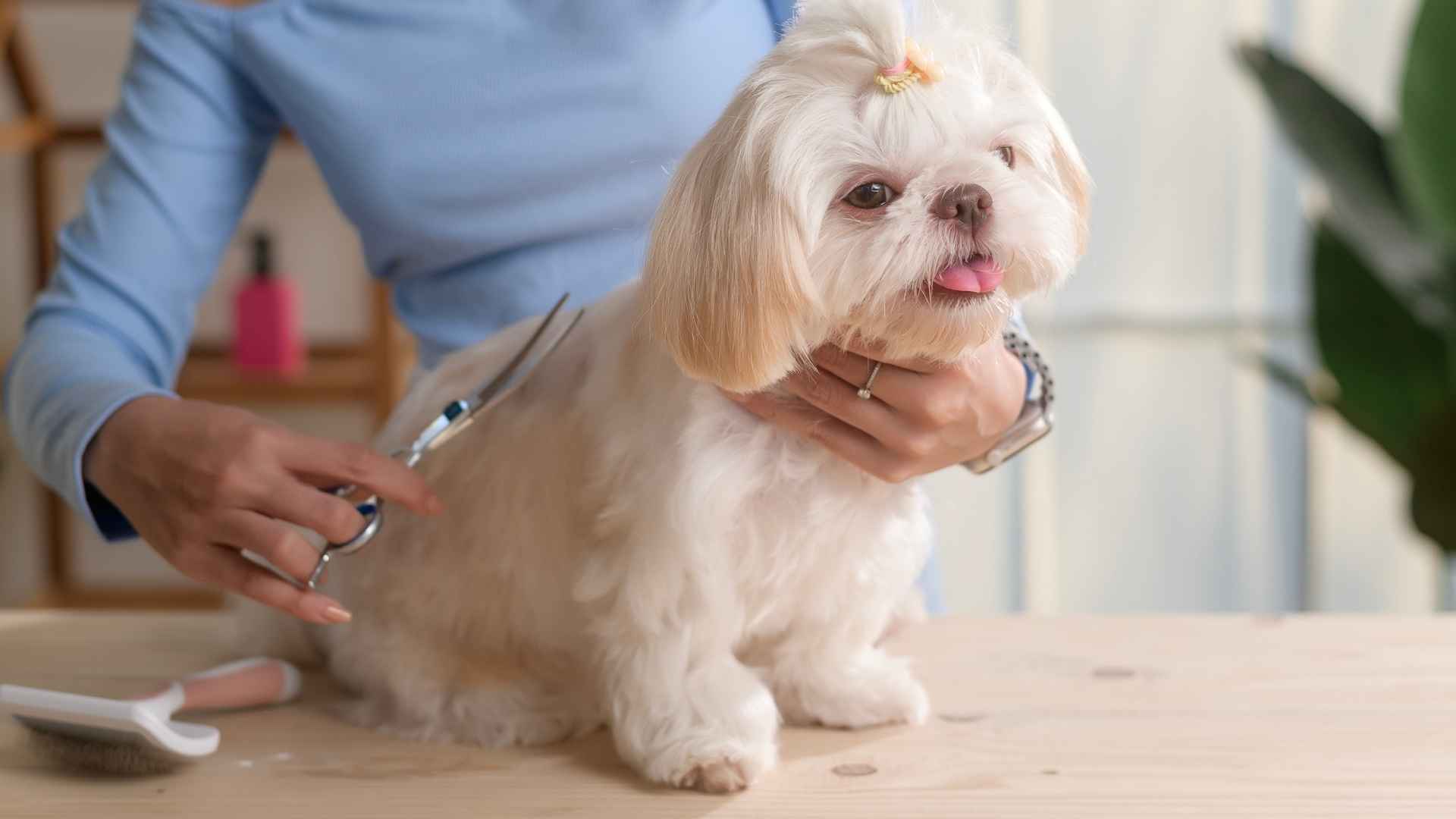Every home with pets speckles its floors and furniture with fur—and that’s where the sneezes, itchy eyes, and allergen worries often start. According to the American Kennel Club (AKC), it’s estimated that 10–20% of people in Western countries are allergic to dogs.
Here’s the thing—less shedding doesn’t necessarily mean less dander.
Even breeds marketed as hypoallergenic drop enough proteins in fur, saliva, and skin to trigger allergies. Some even release more allergens if they’re kept out of the main living spaces.
What this means is that it isn’t just about picking the right coat—it’s about consistent grooming, smart cleaning, and realistic expectations for the pet parents.
Low-Shedding Dog Breeds
Here are the 9 hypoallergenic dog breeds:
1. Standard Schnauzer
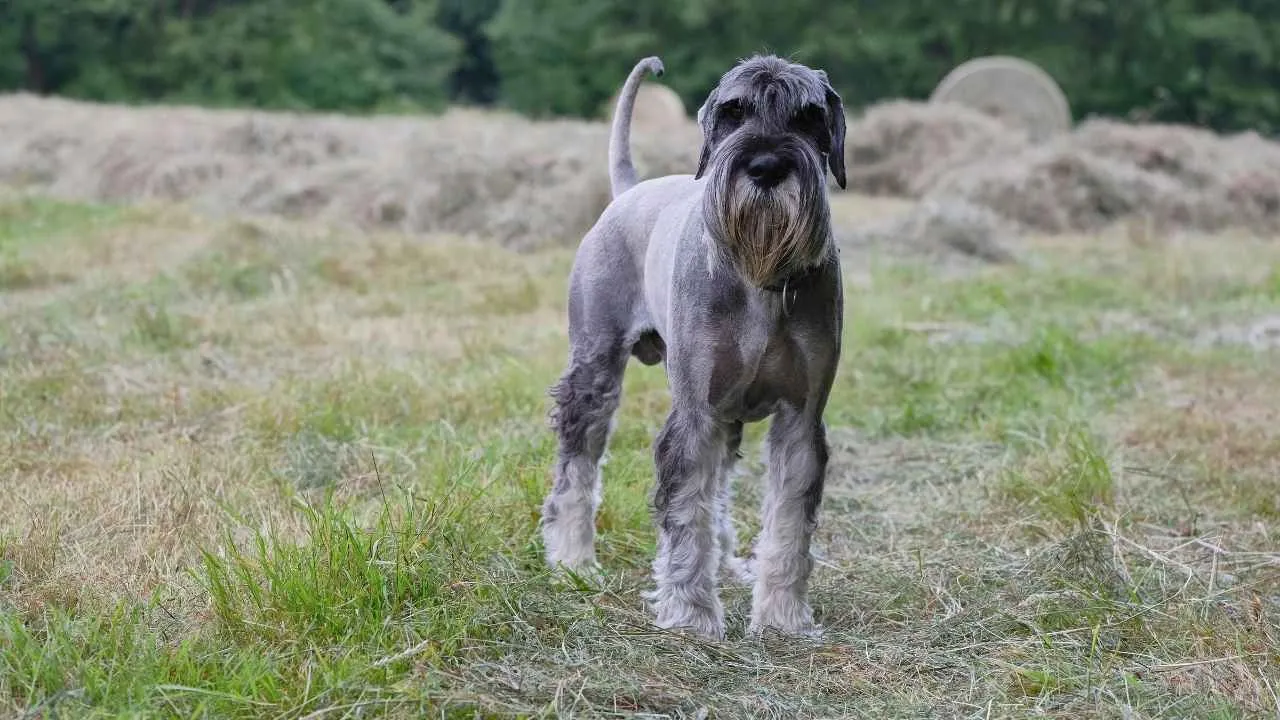
The Standard Schnauzer is more than just a striking face with bushy eyebrows and a signature beard. This ancient breed traces its roots to medieval Germany, where it pulled triple duty as a ratter, guardian, and all-around farmhand.
According to PetMD, its stiff, wiry coat, bristling face, and strong physical characteristics reflect both form and function. This breed was originally bred to work, and it shows.
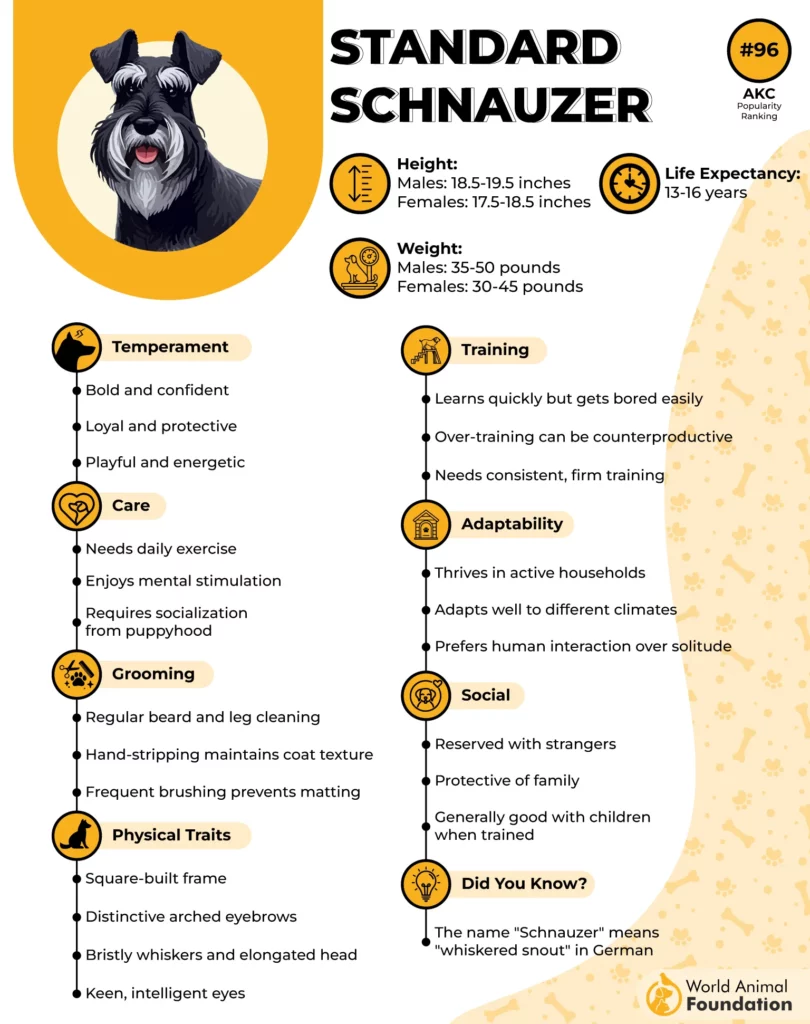
Their coat is made up of a dense underlayer and a wiry outer coat—both of which need regular attention. Though this breed is considered low shedding, that wiry texture won’t maintain itself.
Expect professional grooming at least four times a year to preserve its characteristic look.
Weekly brushing with a brush helps manage loose hair, especially around the beard and legs.
For show-quality dogs, hand stripping is still the preferred method, helping preserve the coat’s texture and low-shedding nature.
Their guard dog instincts make them excellent home protectors without being aggressive.
Highly intelligent and quick to learn, they respond well to firm but positive training.
Their history of hunting and herding gives them a confident, curious energy that demands mental stimulation.
2. Spanish Water Dog
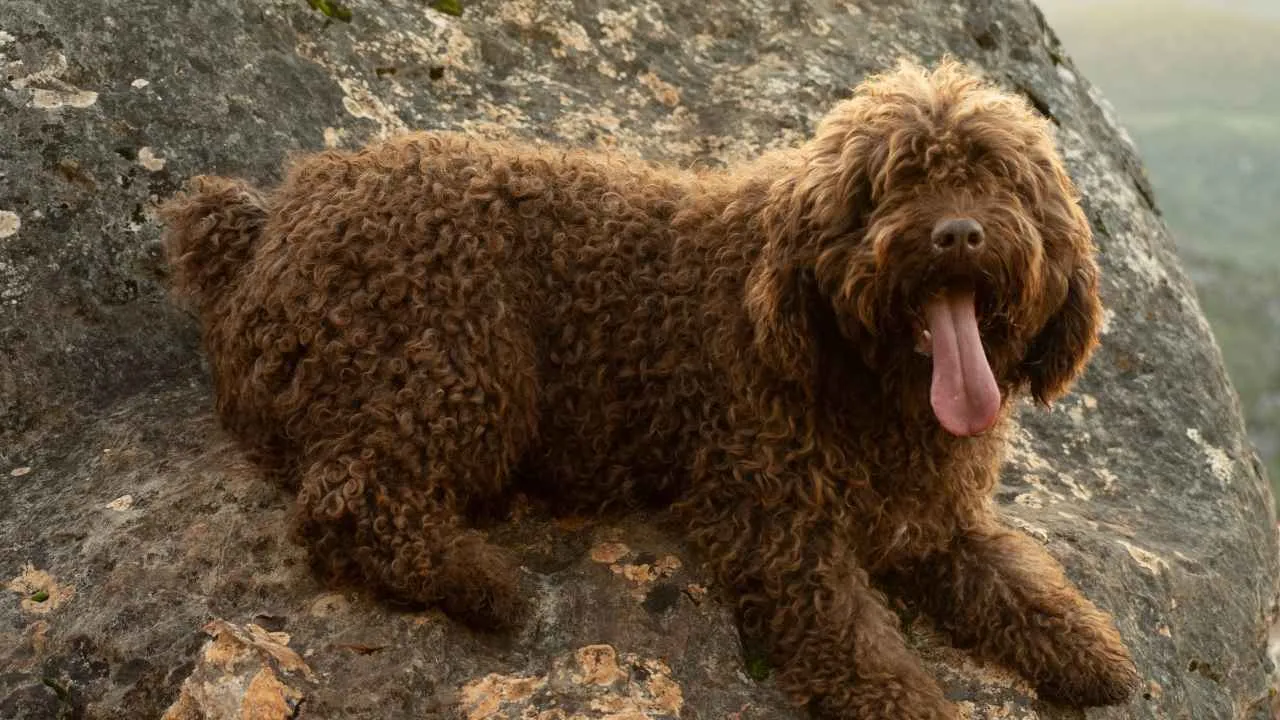
The Spanish Water Dog is a versatile, hardworking breed known for its corded coat, sharp instincts, and unshakable loyalty. Originally developed in Spain as an all-purpose farm dog, it excelled in herding, retrieving, and even assisting fishermen.
This water dog breed is uniquely adapted to both land and sea, with a curly, woolly coat that offers natural skin protection and water resistance, making it a water retriever.
Its hypoallergenic coat makes it a potential option for those dealing with dog allergies, though the coat does require specific maintenance to preserve its texture.
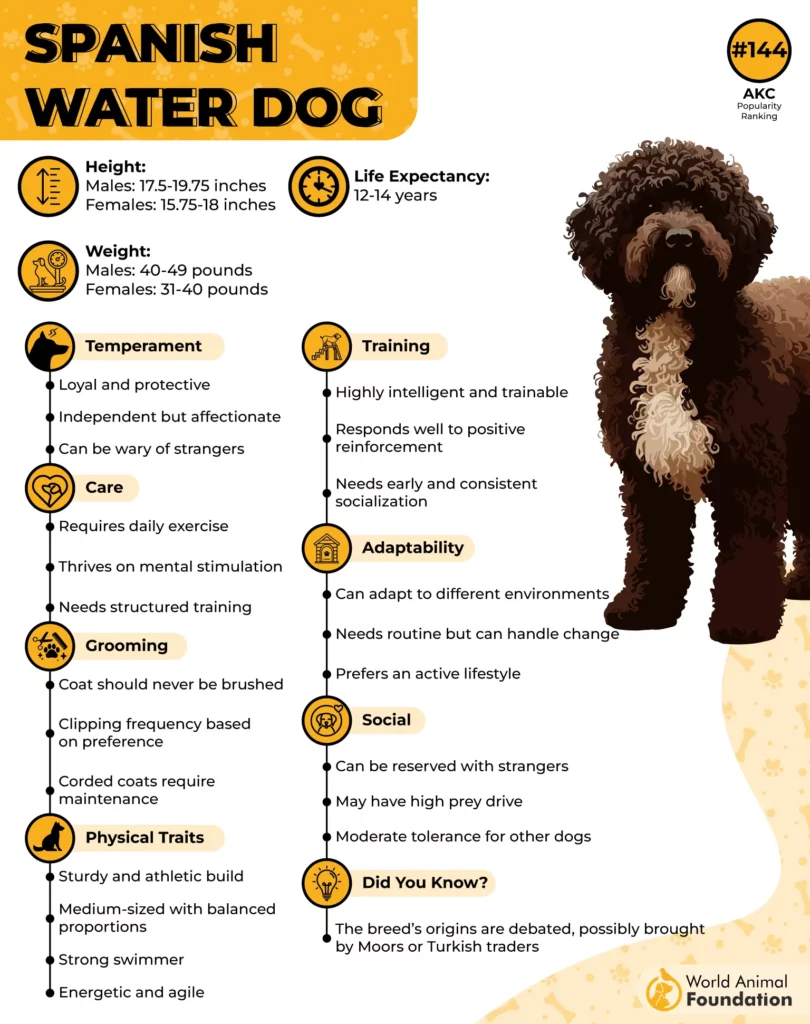
The coat is not brushed—instead, it’s separated gently by hand to maintain the cords and prevent matting.
While it’s a hypoallergenic dog, its coat still traps dander and dirt if not managed properly.
According to VCA Hospitals, trimming is usually done once or twice a year, often by a professional groomer, to keep the coat healthy and consistent.
Their low-shedding coat helps keep your home cleaner, especially when managed alongside regular coat care.
Highly responsive to training, they do well in agility, obedience, and nosework.
3. Bichon Frise
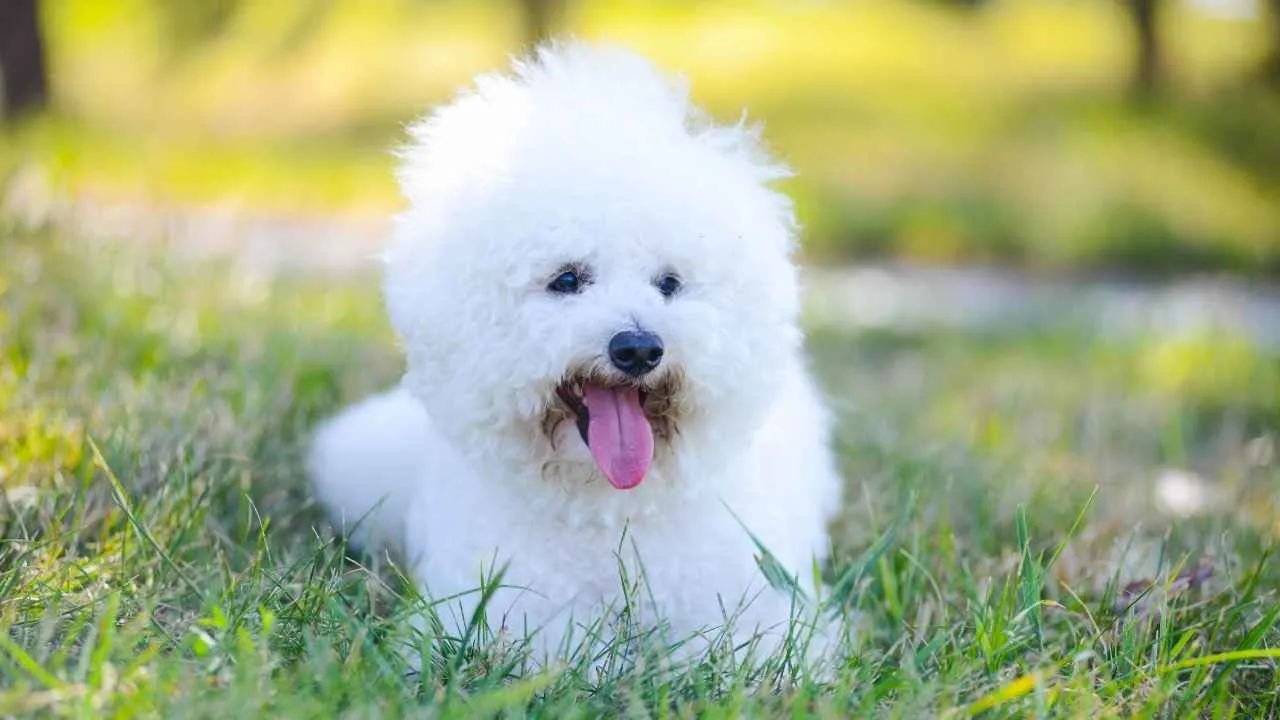
The Bichon Frise is often a top contender for families seeking dogs that don’t shed much and offer a warm, affectionate temperament. While technically a low-shedding breed, its coat—consisting of a dense undercoat and soft, curly outer layer—demands regular grooming.
The coat’s unique texture tends to trap loose hair, meaning shedding rarely results in fur-covered furniture. Instead, most of it ends up on a pin brush, making this breed easier to live with for those sensitive to dander or dog hair.
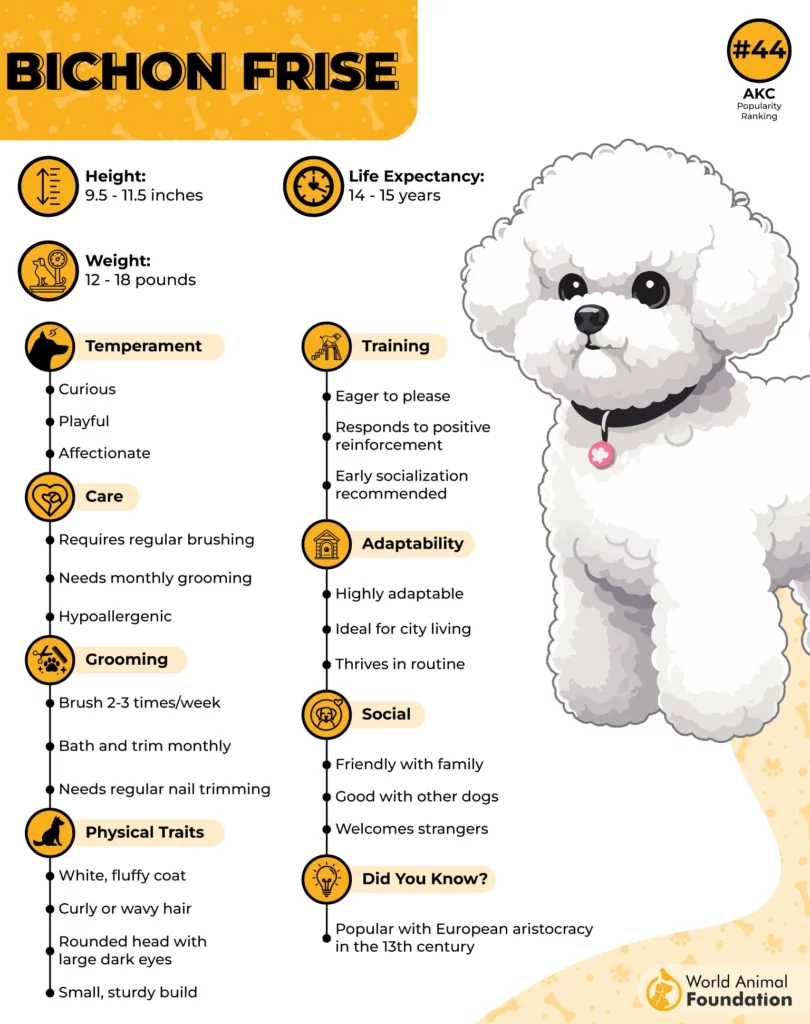
Beyond grooming, Bichons are known for their bright personality, making them an ideal choice for homes with kids, other dogs, or other pets.
That fluffy white coat doesn’t maintain itself—daily brushing helps prevent matting and tangles.
Professional grooming every 4–6 weeks is essential to keep the coat healthy and hygienic.
Thanks to their low shedding, a clean house is more achievable, especially when regular coat care is in place
They respond well to positive reinforcement, often performing little “tricks” just to earn your smile.
Their short coat under the curls helps regulate body temperature, but they still prefer staying dog warm and cozy indoors.
They’re excellent with kids and enjoy socializing with other pets when properly introduced.
4. Chinese Crested
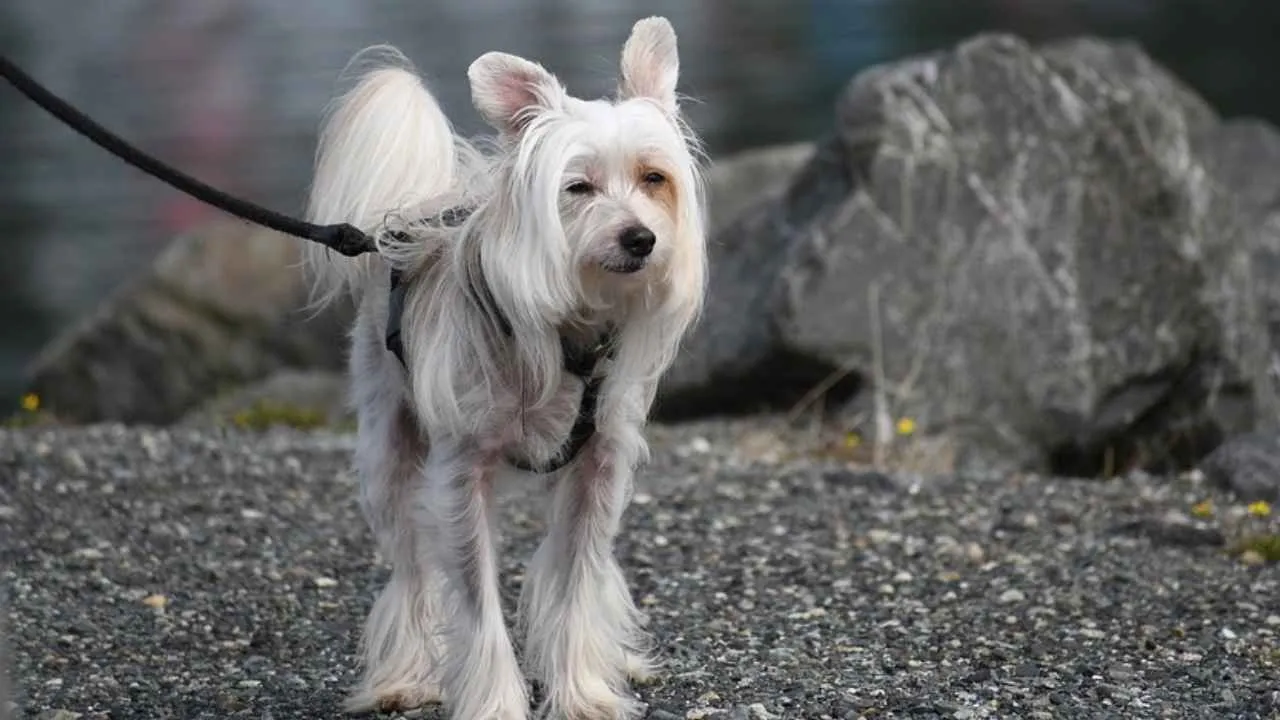
The Chinese Crested is a standout among low-shedding dog breeds, offering a truly unique appearance and an ultra-affectionate personality. Available in two varieties—hairless and powderpuff—this breed thrives on human attention and prefers to be wherever you are, whether it’s lounging on the couch or joining a brisk walk around the block.
The hairless breed is more well-known, with exposed skin that needs special skin protection and care. Despite their delicate look, they’re surprisingly lively and agile, often excelling in canine sports. Whether you live in a small apartment or a full-sized home, this dog fits in without complaint, as long as it’s near you.
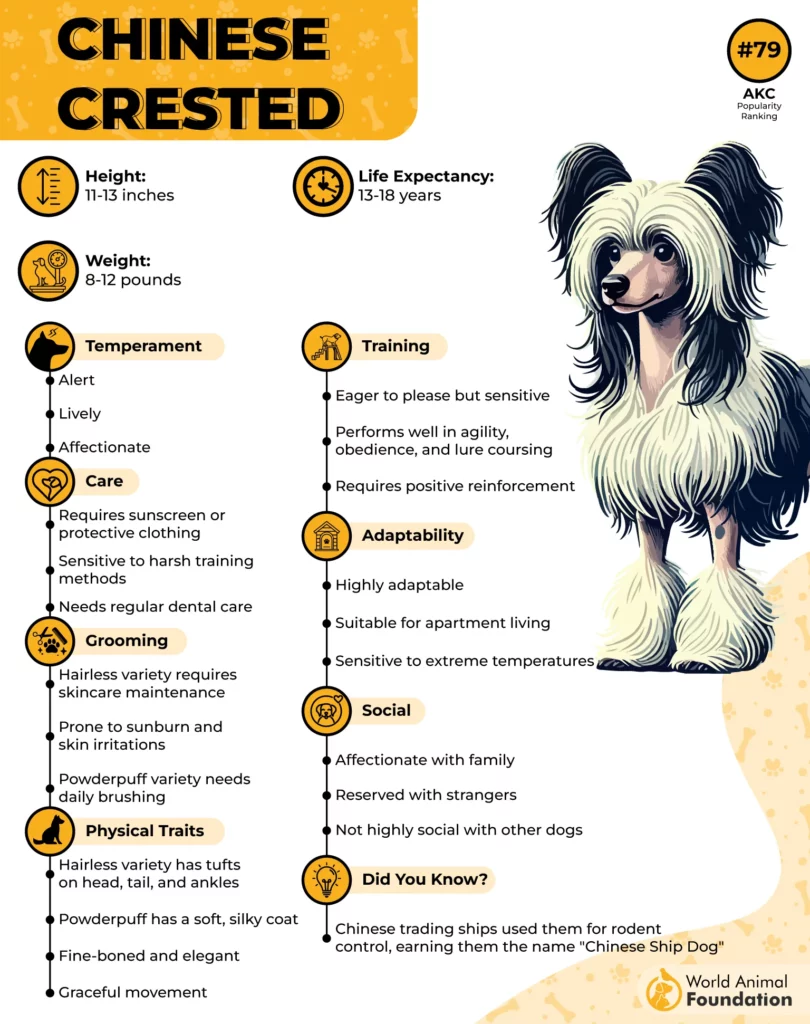
The hairless breed needs frequent bathing and daily moisturizing to avoid dryness and skin conditions.
The powderpuff variety has a soft, fine, curly coat that requires brushing several times a week to prevent tangles.
Both types benefit from professional grooming now and then, especially for nail trimming and dental care.
Chinese Cresteds are alert, curious, and love to entertain their humans with silly antics.
Their size and gentle nature make them ideal for small-space living, whether it’s a city loft or a senior’s cozy home.
While they enjoy lounging, they also need regular exercise to stay happy and healthy.
5. Poodle
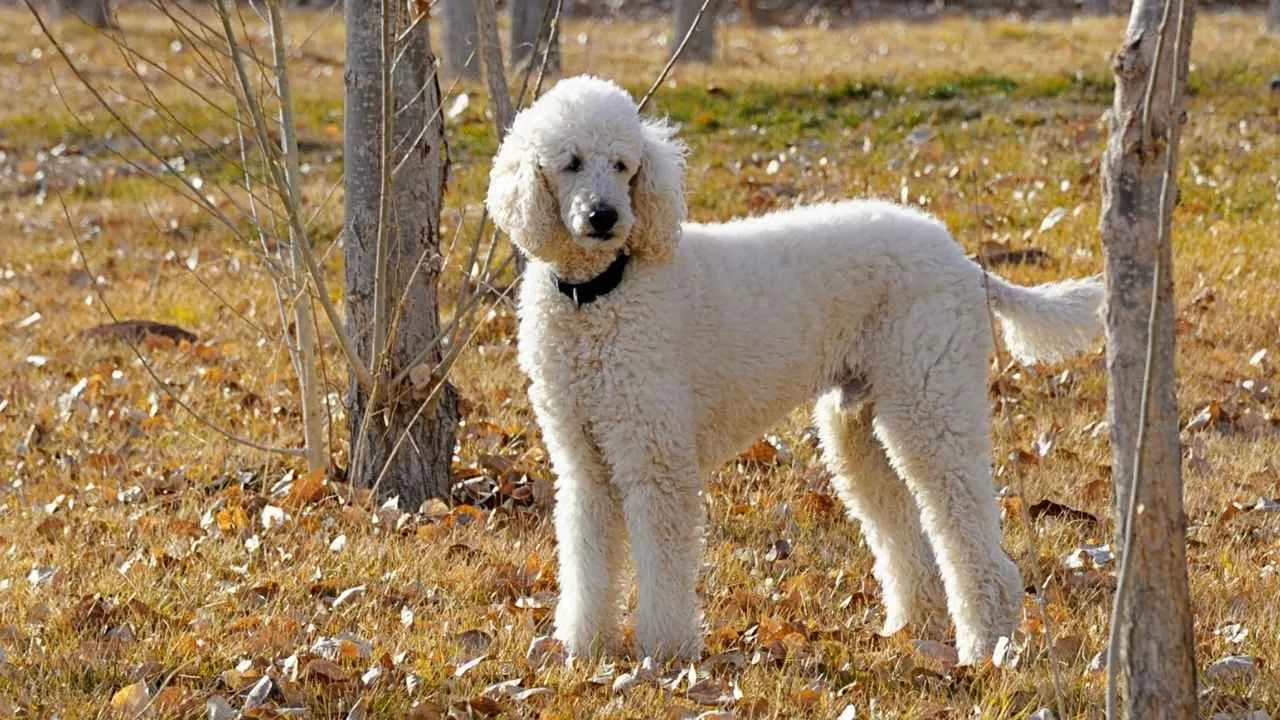
Poodles are often the first breed people think of when they hear hypoallergenic dog—and for good reason. A poodle has a dense, curly coats that trap dander and shed very little, making them easier on allergy-prone households. But it’s important to remember: no dog is 100% hypoallergenic, not even the Poodle, although larger dogs are more prone to shed.
What makes poodles unique, beyond their signature grooming style and range of coat colors, is their intelligence and versatility.
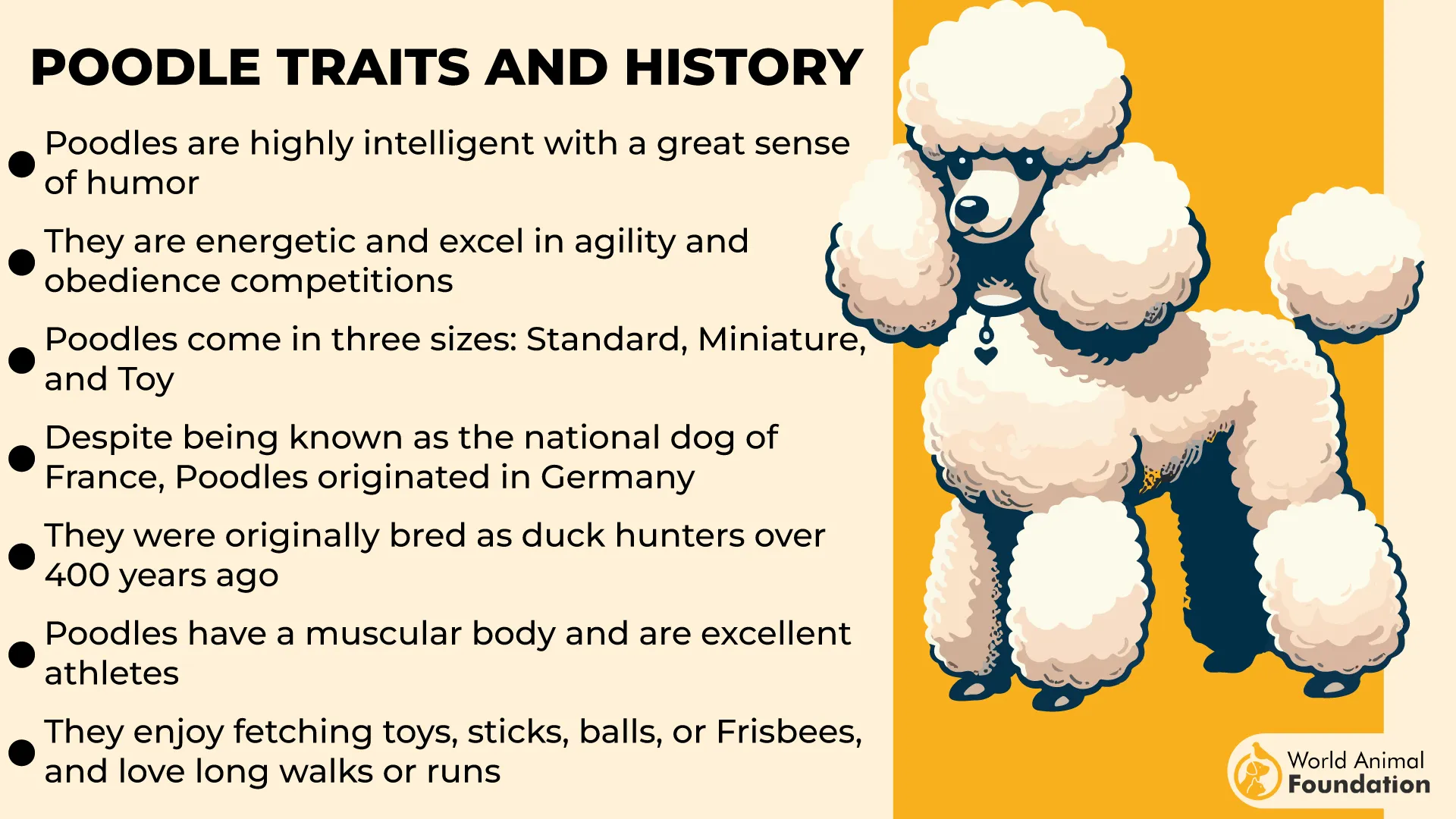
Whether purebred or crossed with another breed (think Labradoodle or Goldendoodle), Poodles bring personality, elegance, and energy to any home. That said, not all Doodle mixes are created equal—coat texture and shedding can vary widely depending on genetics.
Rather than traditional fur, they have hair that grows continuously and sheds minimally.
This hair type holds onto dander instead of releasing it into the air, reducing allergens in your home.
But it also means grooming is a must—brushing, trimming, and the occasional professional haircut are non-negotiable.
They consistently rank as the most intelligent dog breed, which makes them quick learners and great problem-solvers.
This intelligence also means they crave human interaction—they’re not a breed that enjoys being left alone for long stretches.
Their love of activity makes them perfect for owners with an active lifestyle or anyone who enjoys dog sports.
6. Yorkshire Terrier
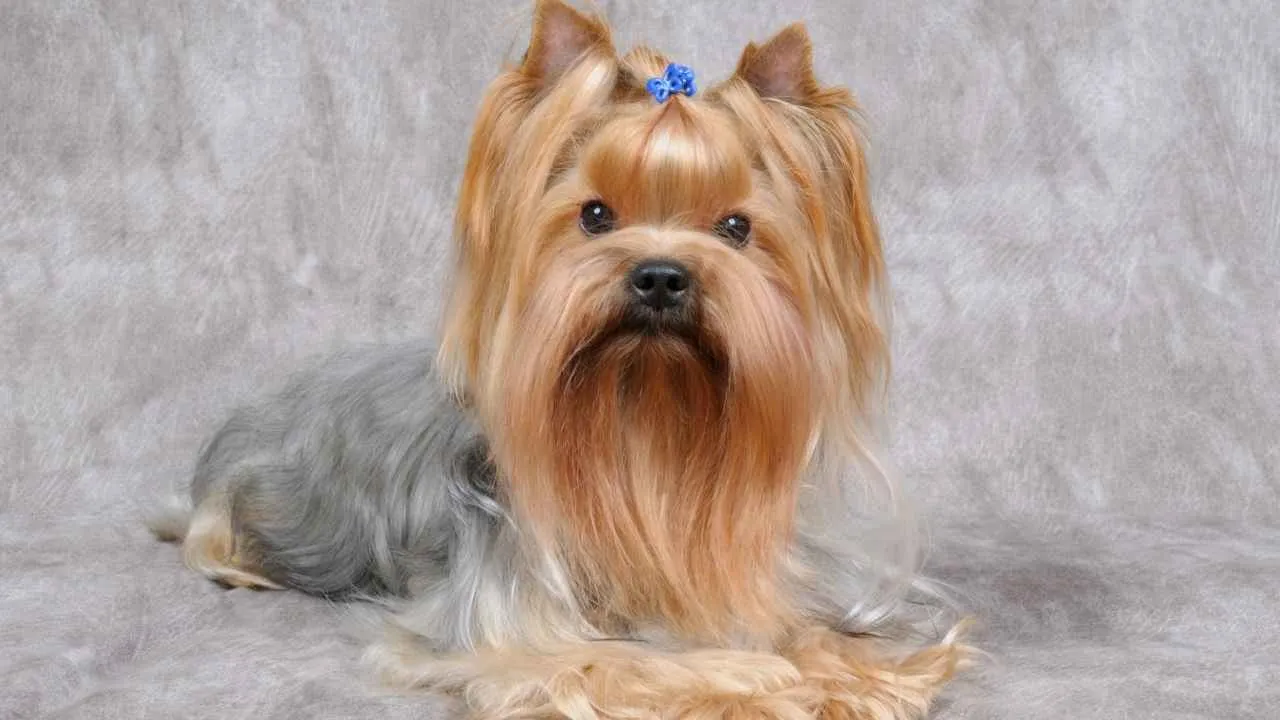
Don’t let the tiny size fool you—Yorkshire Terriers come with a full-sized personality wrapped in a silky, low-shedding coat and are a hypoallergenic dog. Their elegant hair grows continuously, much like human hair, which means minimal shedding but regular grooming.
What makes them appealing to allergy-sensitive homes is their single-layer coat that doesn’t blow out seasonally like double-coated breeds.
While you’ll still see a few stray strands on the floor or couch, most of the loose hair stays trapped in their coat and can be easily brushed out during grooming.
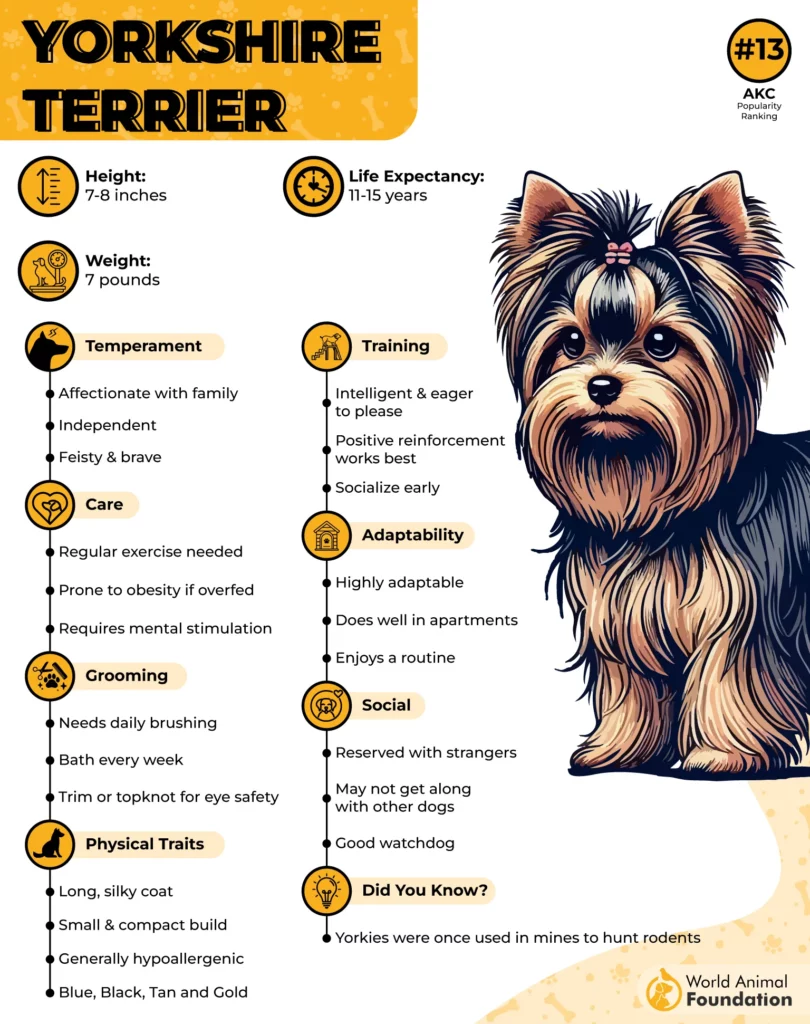
That said, owning a Yorkie isn’t low-effort. These dogs need time, attention, and regular maintenance—but they’ll give back all of that and more in affection and playfulness.
Yorkshire Terriers may be small, but their confidence is sky-high. They’re true compact watchdogs, always alert and ready to sound the alarm.
They thrive on being near their people and often develop strong attachments to one or two family members.
Social and outgoing when well-trained, they still carry a bold streak that makes them act bigger than they are.
They lack an undercoat, which helps reduce allergens but means their grooming needs are higher.
To keep their signature coat healthy, they need daily brushing, regular baths, and frequent trims.
7. Shih Tzu

The Shih Tzu might look like a walking fluffball, but surprisingly, that glorious mane doesn’t leave trails of fur in your home. Thanks to their long double coat, Shih Tzu are considered low-shedding lapdogs—their hair grows more like ours as a long coat, meaning it stays put until brushed out or trimmed.
While they do shed a little, it’s typically noticeable only during grooming sessions or seasonal coat transitions.
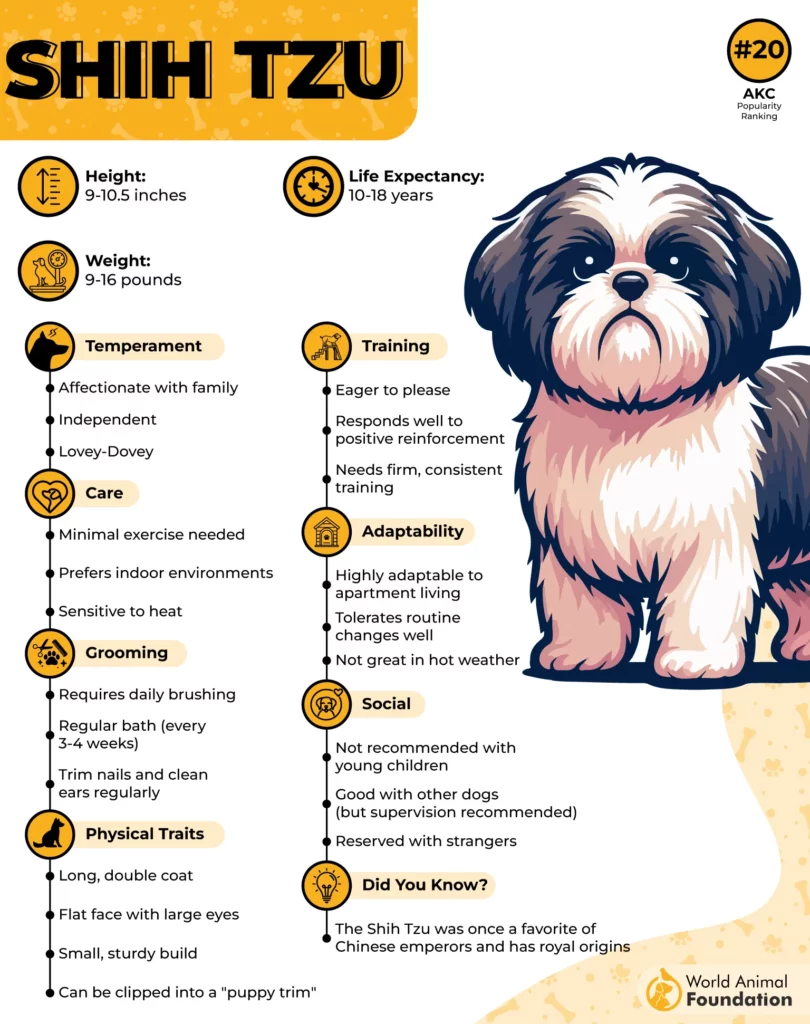
What they lack in mess, though, they make up for in grooming needs. Their plush outer coat and soft undercoat require regular upkeep to stay tangle-free and healthy. Beyond the coat, these dogs are lovable, loyal, and ready to follow you from room to room with a tail that never stops wagging.
Puppies start with a short, fine coat and gradually grow into their full, lush adult coat after a few months.
They’re affectionate with kids, adults, and even other pets, but they don’t like being left alone.
Separation anxiety can be a real concern, so they’re best suited to homes where someone’s usually around.
Known as “Little Lions” for their proud strut and full mane, these dogs have bold personalities in small bodies.
With short snouts, they’re a heat-sensitive breed, so walks and playtime need to be carefully timed in warmer weather.
8. Briard
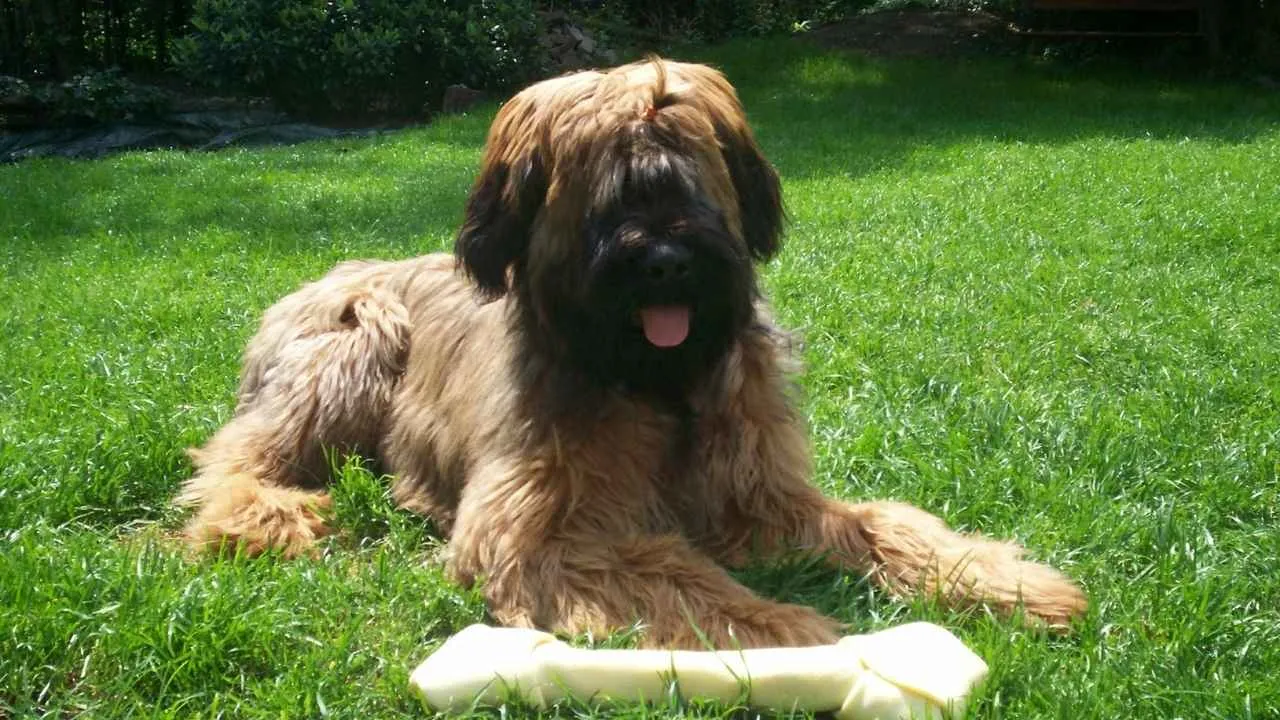
The Briard is a bold, brainy dog wrapped in a mop of fur. Historically bred in France to herd sheep and guard flocks, today’s Briard still carries those deeply rooted instincts—only now, the flock might be your kids or your living room furniture. This natural guardian dog is protective and smart enough to outthink the average burglar (or toddler).
Despite the mountain of fur, the Briard has a shaggy, low-shedding coat that, when properly maintained, keeps your home surprisingly clean.

But grooming isn’t optional. Neglect it, and you’re not just dealing with mats—you’re risking painful skin issues. If you can commit to the brushing schedule, though, the Briard is a devoted, high-energy companion with a lot to offer.
They’re watchful and alert, often acting as gentle watchdogs with a deep bark and steady presence.
That same protectiveness means early socialization is key—without it, they may become overly suspicious of strangers.
The Briard’s double coat is long, coarse, and designed to repel dirt and moisture.
Seasonal coat shifts happen once or twice a year, especially in spring or fall, and the new growth may come in a different shade.
Expect a high-energy dog that needs more than a quick stroll—think fetch, agility, or even flyball.
9. Bergamasco Shepherd
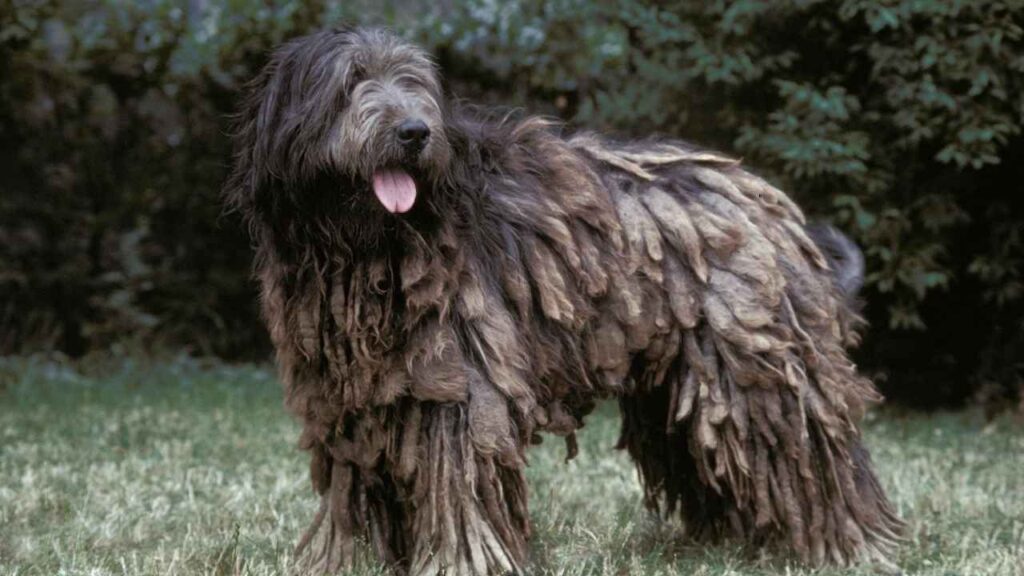
The Bergamasco doesn’t look like your typical dog—and that’s the point. Covered in a dense, textured coat that naturally mats into thick flocks, this ancient Italian breed was built to thrive in the unforgiving climate of the Alps. It’s protection from ice, wind, and predators.
The coat is made up of three types of hair that weave together, earning it a reputation as a non-shedding dog with a thick coat. And unlike what you’d expect from a dog with this much hair, the Bergamasco is quite low maintenance, requiring very little grooming once the mats are fully formed.
Beneath the shaggy exterior is a calm and independent dog. Bergamascos are incredibly patient, so much so that they’re often used in therapy work with children. They thrive in family settings, especially with kids, and serve as both cuddly companions and protective woolly watchdogs.
Once fully formed, the flocks need only occasional maintenance to stay clean, though drying after a bath can take all day.
Bred to work alone in mountainous terrain, this dog is smart, observant, and not in a rush to please.
Training requires patience and consistency—they’re not difficult, just independent thinkers.
Bergamascos do best with a stable routine and minimal chaos. They’re not clingy, but they are quietly attached.
Conclusion
Low-shedding dogs can be a game-changer for anyone who wants a cleaner home without sacrificing companionship. Whether you’re dealing with allergies or just tired of vacuuming daily, these breeds offer a smart solution. But less shedding doesn’t mean zero effort—most still need regular grooming to keep their coats healthy and skin irritation at bay.
If you’re searching for the best dogs, coat type is just one part of the equation. Think about energy levels, temperament, and potential health issues. A low-shedding coat won’t help much if the dog’s needs don’t align with your lifestyle.


